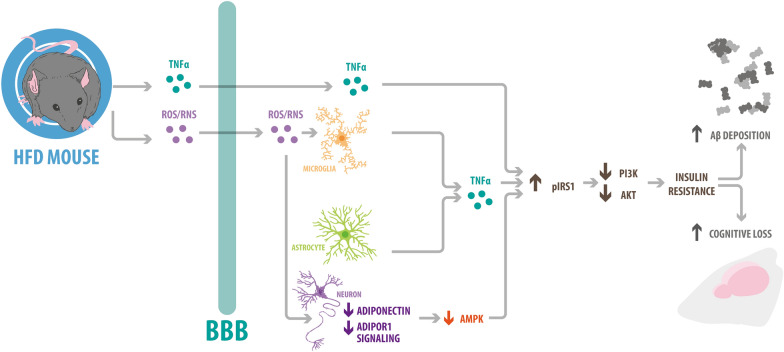Fig. 3.
Brain inflammation produced in obesity. In HFD-fed mice, peripheral proinflammatory cytokines such as TNF-α and reactive species such as ROS and RNS are present. Both can cross the BBB to reach the brain. ROS and RNS activate microglia and astrocytes, stimulating them to produce more TNF-α and decreasing AdipoR1 signaling (which is why the levels of AMPK, which is part of this pathway, decrease). TNF-α (which enters the brain from the periphery and is produced by astrocytes and microglia when they are stimulated by ROS and RNS from the periphery), together with the decrease in AMPK, ultimately decrease IRS-1 signaling (IRS-1 is phosphorylated at serine instead of tyrosine, thus decreasing pPI3K and AKT levels). This causes insulin resistance, which is proposed to be the cause of increased Aβ deposition and cognitive loss

